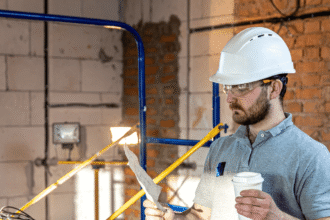Modern architecture is evolving quickly, and so are the systems that make buildings efficient, comfortable, and sustainable. Among the most transformative innovations in this space are next-generation window systems engineered to balance natural light, thermal performance, and energy efficiency.
Windows are no longer passive openings in a wall. They have become intelligent components that respond to climate conditions, reduce operational costs, and enhance occupant well-being.
The Role of Windows in Modern Building Design
In today’s energy-conscious world, windows do more than provide light and ventilation. They play a vital role in achieving energy performance targets, maintaining interior comfort, and contributing to overall sustainability certifications like LEED and WELL.
Next-generation window systems integrate advanced glazing, smart sensors, and automated controls to help buildings adapt dynamically to their surroundings.
Key Innovations Defining Next-Generation Window Systems
1. High-Performance Glazing
Modern glazing solutions use low-emissivity (Low-E) coatings that reflect heat while allowing visible light to pass through. This helps regulate indoor temperature, reducing the need for mechanical heating or cooling. Multi-pane and vacuum-insulated glass further enhance thermal resistance without adding bulk.
2. Smart Tinting and Dynamic Glass
Electrochromic and photochromic glass technologies are changing how daylight is managed inside buildings. These windows automatically adjust their tint based on sunlight intensity, minimizing glare and heat gain while maintaining visibility and aesthetics.
3. Integrated Shading Systems
Rather than relying on traditional blinds, architects now specify automated shading systems that work in sync with daylight sensors. These systems maintain a consistent level of natural illumination while preventing excessive solar gain.
4. Frame and Sealant Advancements
Next-gen frames use thermally broken aluminum, fiberglass, and composite materials that reduce heat transfer. High-performance sealants ensure air and water tightness, essential for high-rise and extreme-weather environments.
5. Acoustic and Security Performance
Windows now incorporate laminated glass and precision-engineered gaskets to enhance acoustic insulation and safety. This makes them ideal for urban environments where noise and security are major design factors.
How Smart Windows Improve Energy Efficiency
Smart window systems are often connected to a building automation system (BAS). They communicate with HVAC units, sensors, and lighting controls to adjust based on occupancy and outdoor conditions.
This level of automation can lower energy consumption by up to 20–25%, creating measurable operational savings while reducing the building’s carbon footprint.
Design Flexibility and Aesthetic Value
Architects no longer need to choose between performance and beauty.
Next-generation windows come in custom shapes, slim profiles, and advanced coatings that offer transparency, reflection, or even coloration tailored to the project’s visual identity.
These designs maintain the architectural intent while delivering measurable sustainability benefits.
The Future Outlook
As climate goals tighten and smart cities expand, adaptive façade systems where windows interact seamlessly with the entire building envelope will become the new standard.
Manufacturers are also investing in recyclable materials and sensor-driven data to improve product life cycles.
The future of construction lies in collaboration, where architects, engineers, and material scientists work together to make window systems an intelligent, energy-generating element of the built environment.
Image Credits: Freepik












